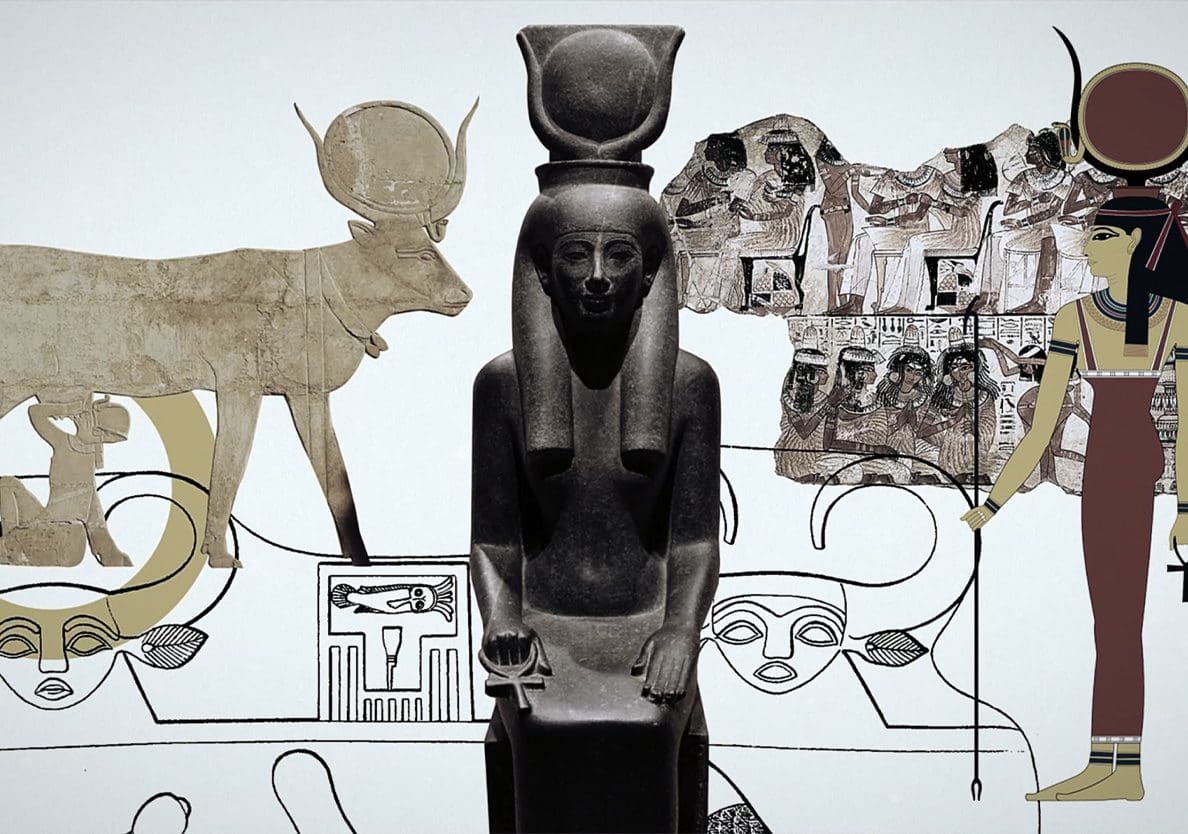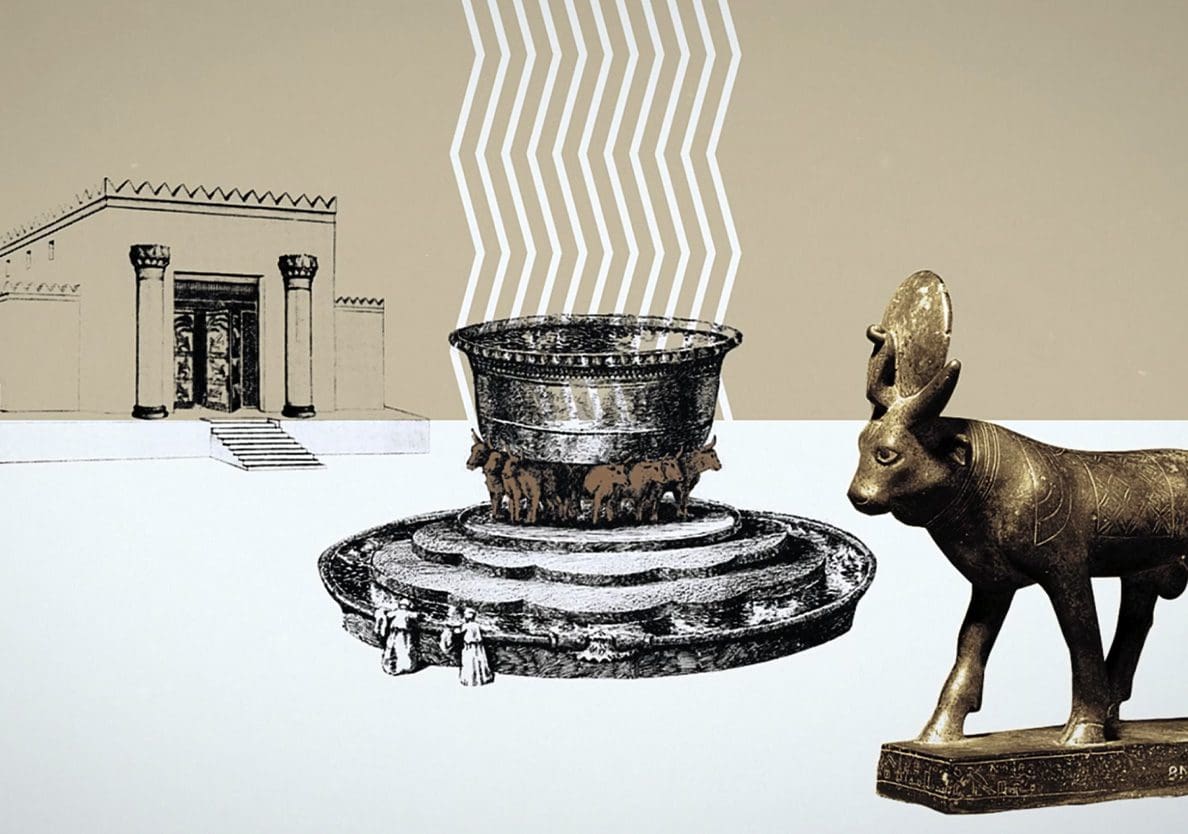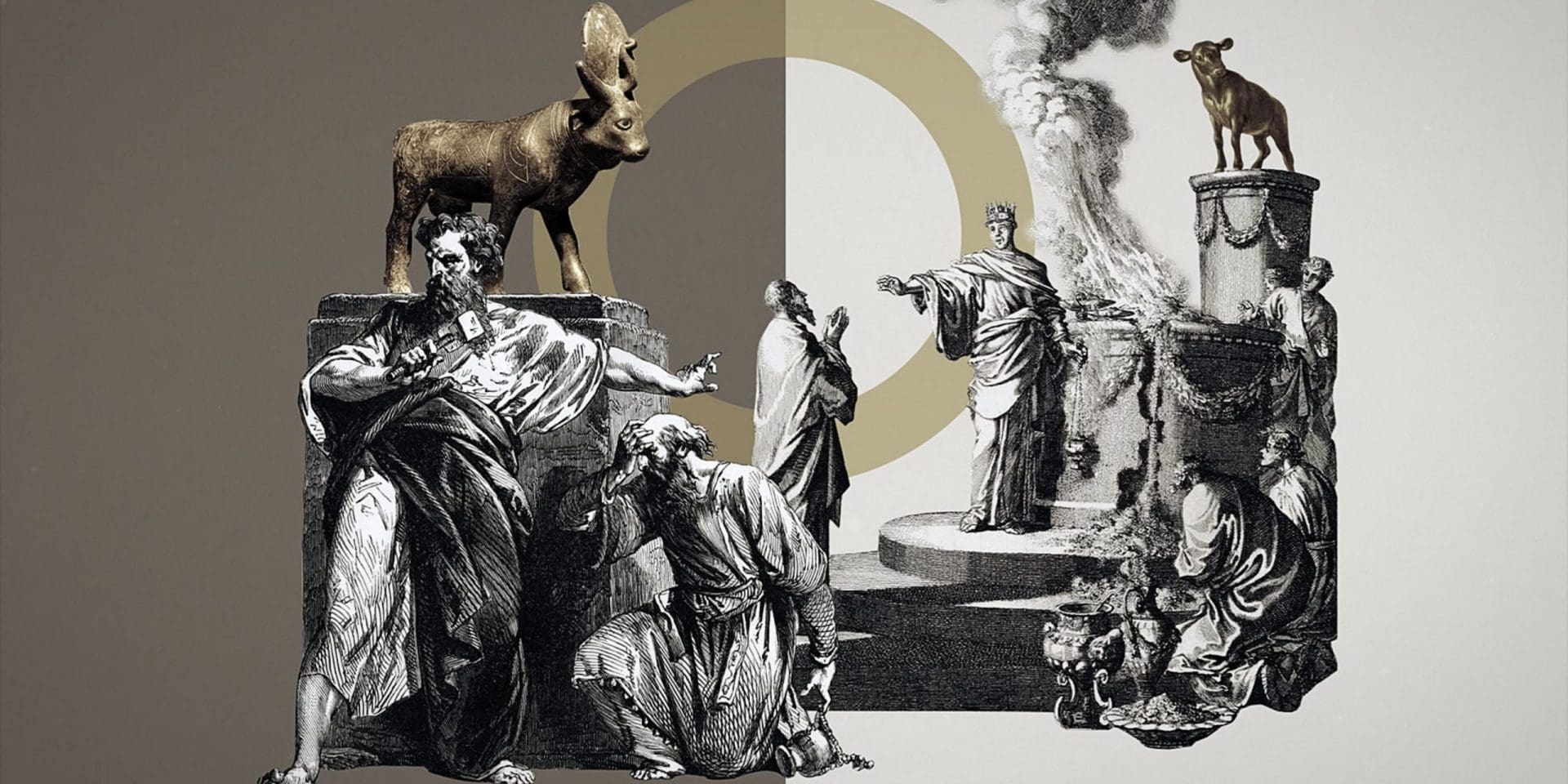Two major instances of idolatry in the Bible are directly connected with ancient Egypt. One occurred under the leadership of Aaron while Moses was delayed on Mt. Sinai (Exodus 32), and the other was initiated by Jeroboam after he successfully took control of a fragmented Israeli kingdom (1 Kings 12). These instances have a few other things in common, the object of their worship was rendered as a cow or calf, took place during a vulnerable time of transition and therefore afforded a sense of security or unity to the people. So why were idols in both of these circumstances crafted into the shape of calves or cows?

In the case of the Golden Calf incident during the days of Moses and Aaron, Israel had just escaped oppression in Egypt and had been travelling to the Promised Land, facing opposition and physical warfare on their way. They made a pit stop at Mt. Sinai where Moses left them to go and receive instruction from God. When Moses didn’t return, the people assumed him dead, themselves abandoned. They forced Aaron to make an idol for them to worship and inquire of for help – why a calf?
In the case of Jeroboam, who himself had just returned from taking refuge in Egypt away from King Solomon who had a price on his head (1 Kings 12:2). He was king of newly formed Northern Israel, he had the allegiance of most of the tribes of Israel, but had lost the crowned jewel of the nation, Solomon’s Temple in Jerusalem. Jeroboam’s answer was to set up two sacred areas within his territory so that the people would not feel compelled to travel back into his rival’s dominion to worship or celebrate the feasts of the Lord. Again, Jeroboam’s idols of choice were cows
“Due to Hathor’s nature as a goddess of provision, it seems a natural possibility that in Israel’s time of need, they turned to a familiar cult to rescue them from their predicament.”
While the full meaning of the golden cows may not be ascertainable, the connection with Egypt is likely not a coincidence. The ancient Egyptians worshipped a few deities that utilized bull and cow imagery. They had a sacred bull cult dedicated to the life and death cycles of the god of the underworld, involving cycles of worshipping then slaughtering living bulls.
Even more widespread was their worship of the cow goddess Hathor, she was sometimes depicted as a full cow, and sometimes as a human with a cow’s head or ears. The cow was seen as life giving; she sustained life through her milk, it was even said of some Pharaoh’s that they were nursed by Hathor. This cow goddess empowered, sustained and imparted divinity to the king’s rule. Due to Hathor’s nature as a goddess of provision, it seems a natural possibility that in Israel’s time of need, they turned to a familiar cult to rescue them from their predicament – without a leader, in hostile territory with vulnerable families. Likewise, Jeroboam needing to unify his people even further likely reached into his pop culture to provide an alternative.


Justification for Jeroboam’s apostasy may even have been pillaged from the imagery of the Temple itself. The Temple’s bronze basin sat upon 12 bronze bulls (1 Kings 7). These bulls were not symbols of God, but their association with the Temple, strength, and perhaps the 12 tribes of Israel could have paved the way towards the cultural justification of Jeroboam’s high places.

Corie Bobechko is a daily co-host, speaker, and writer of Bible Discovery. She also hosts a YouTube channel that shows how history and archaeology prove the Bible. Her heart for seekers and skeptics has led her to seek truth and share it with others. Corie also has a Bachelor of Theology from Canada Christian College.






